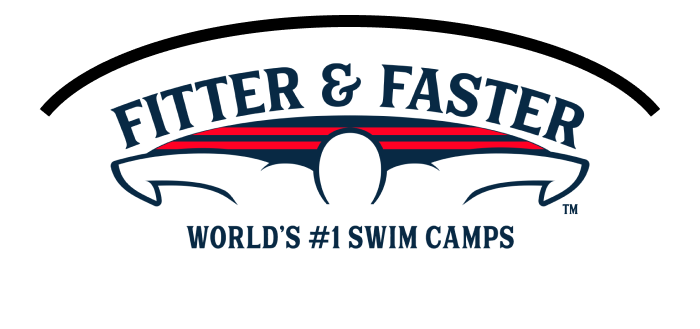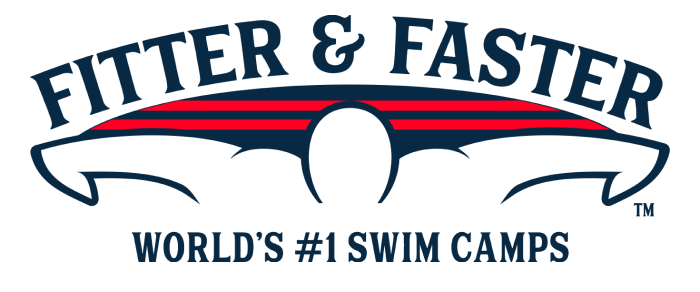Past Clinic: Elite Starts, Speed & Power for Ages 13 & Over
Northwood High School
4515 Portola Pkwy,
Irvine,
CA 92620
A description of what was covered at this past clinic is below the upcoming clinics.
Upcoming Swim Clinics and Camps
Within 250 miles of Irvine, CA.
Past Clinic
Introduction
Fitter & Faster is returning to Irvine, CA to produce a 2-day swim camp on December 27-29, 2023 for swimmers ages 13 & over! Please see below for links to additional camps for swimmers of other ages!
Elite Starts, Speed & Power (Ages 13 & over)
-> DAY 1 (Wednesday, Dec 27): Explosive Starts, Underwaters & Breakouts
-> DAY 2 (Thursday, Dec 28): Generating Power
-> DAY 3 (Friday, Dec 29): Creating & Maintaining Speed
Scroll down for details on the curriculum!
-> Availability is limited to ensure the highest level learning experience.
-> SAVE when you purchase the “Full Camp Bundle” for your swimmer.
SESSION START TIMES: Check in 1:45 PM, Camp 2-5 PM
Additional swim camps in Irvine:
-> Ages 10 to 12 (December 2023)
-> Ages 10 to 12 (2024 Series)
-> Ages 13 & over (2024 Series)
-> Ages 7 to 10
Suggested Participants
Our top priority is to provide a world-class learning experience for all participants at all of our camps. This camp has sessions for swimmers ages 13 & over. Participants will range from one-year of competitive swimming experience to AAAA times and faster.
Curriculum
The Elite Speed and Power Camp is exclusively for swimmers ages 12 and older. Over the course of three days, participants will focus on advanced techniques and skills necessary for fast swimming in every stroke. Day 1 will cover block starts, underwaters and breakouts. Day 2 will focus on generating power. Day 3 will emphasize creating and maintaining speed! This swim camp will be led by Elite Clinician: Marina Spadoni!
DAY 1 (Wednesday, Dec 27): EXPLOSIVE STARTS, UNDERWATERS & BREAKOUTS
The better a swimmer’s technique is off the starting block, the more speed they will carry into the water. Day 1 of this swim camp will help your swimmer improve their start, underwater dolphin kicking and breakouts! This sequence is not only the fastest part of every race, but it is also the part of the race in which elite swimmers cover the most ground with the most efficiency.
- BLOCK STARTS: To ensure an explosive start, a swimmer needs to set themselves up properly on the block. The elite clinicians will work with participants on the optimal positioning of your swimmer’s entire body to allow for a quick reaction time and optimal speed.
- STREAMLINE: The streamline - when done properly - is the fastest a swimmer travels while in the water. Proper streamlines are even faster than underwater dolphin kicking. Even the most elite swimmers in the world are constantly working on improving their streamline. Your swimmer will get tips to improve their streamline and a better appreciation of what they need to do on every single wall in practice and in races.
- INITIATING UNDERWATER DOLPHIN KICKING: Elite swimmers want to maximize their streamline on every single lap. So, they don’t want to start their underwater dolphin kicking while they’re still achieving maximum speed in their streamline. They also don’t want to start the underwater dolphin kicking after their streamline has begun to slow. Your swimmer is going to learn how to time when to begin their underwater dolphin kicking.
- POWERFUL UNDERWATER DOLPHIN KICKING: There are a few different techniques that swimmers use when underwater dolphin kicking. The common theme of these techniques is that the best swimmers kick up and down with equal power. We will show your swimmer the different techniques that elite swimmers use and teach them how to implement.
- NUMBER OF UNDERWATER DOLPHIN KICKS: Figuring out the optimal number of kicks off each wall, for each race, is essential to fast swimming. Elite swimmers want to spend only the absolute necessary amount of time underwater to establish speed with each length. They want to avoid losing their breath and taking weak kicks.
- BREAKOUTS: Many swimmers add movement within their breakout that creates drag and destroys all of the speed created during their underwaters. Participants will work on timing their breakouts to explode into each lap.
DAY 2 (Thursday, Dec 28): GENERATING POWER!
Developing power will help your swimmer be more efficient and stronger in the water! To strengthen swimming specific movements, the elite clinicians will work with participants on improving power in their strokes, using resistance training and dynamic warm-ups to their advantage.
- GEAR TO BRING WITH YOU!: Please bring a t-shirt to swim in, your snorkel, paddles, fins and a pair of gym sneakers to this camp!
- DYNAMIC WARM-UP: In order to go fast, you need to be warm! The clinicians will take participants through a combination of light cardio exercises and dynamic stretches to get the blood flowing to the muscles and loosen joints in preparation to SWIM FAST! Remember: Bring your Gym Shoes!
- ESTABLISHING YOUR CATCH TO MAXIMIZE POWER IN YOUR STROKE: The only way to generate maximum power in your stroke is by “holding” as much water as possible. That process begins with “your catch” at the top of every stroke. At this camp your clinicians will work with you to ensure you are grabbing onto and holding water throughout your stroke.
- RESISTANCE TRAINING: Resistance is an excellent method of building power - especially in the water. It also helps to expose areas within your technique that can be strengthened. The clinicians will take your swimmer through resistance training methods! Properly swimming with hand paddles and a T-shirt will add resistance and develop power! Remember: Bring a t-shirt to swim in and your hand paddles!
Day 3 (Friday, December 29): CREATING & MAINTAINING SPEED!
Your swimmer is going to learn how to swim at top speeds while continuing to leverage the powerful stroke that we worked on the day before! On Day 2, participants swam slower than they normally swim because of the resistance we added to establish a “powerful stroke”. Today is about swimming FASTER than you normally swim with assistance from fins and paddles.
- GEAR TO BRING WITH YOU!: Please bring a t-shirt to swim in, your snorkel, paddles, fins and a pair of gym sneakers to this camp!
- “OVERSPEED TRAINING”: Practice how to swim with good technique at speeds faster than you’ll ever go in a race with the assistance of fins and paddles. We will utilize overspeed drills in and out of turns, in their breakouts and finishes. Remember: Bring your fins and hand paddles!
- TEMPO & DISTANCE PER STROKE: One way to increase efficiency is to take fewer strokes. Improving technique to decrease the number of strokes your swimmer takes will enable them to go further faster - that’s when times DROP!
- MAINTAINING TECHNIQUE THROUGH FATIGUE: When swimmers get tired, their technique can break down. We are going to work with participants on how to handle fatigue. Competitive swimmers who focus on technique through fatigue in practice and in races reap the rewards of faster times.
- SPEED SET: At the end of this session your swimmer will do a short and fast swim set to practice everything they have learned over the past two days.
ASK QUESTIONS
Swimmers and parents are invited to ask the clinicians questions during a Q&A session. Gain insight into their training regimen, diet and nutrition, and recovery tactics.
WATCH THE CLINICIANS
Observe clinicians swim at full speed and demonstrate a progression of perfectly executed drills to achieve powerful, efficient and fast swimming.
PUT YOUR SKILLS TO THE TEST
Throughout the camp, swimmers will practice what they've learned with some of the world's most elite Swimmer Clinicians and coaches!
Take a photo, get autographs, and chat with your clinicians!
Inquisitive, Educated Swimmers are Faster Swimmers! Sign up today!
Search all of our clinics...or request a clinic in your area







